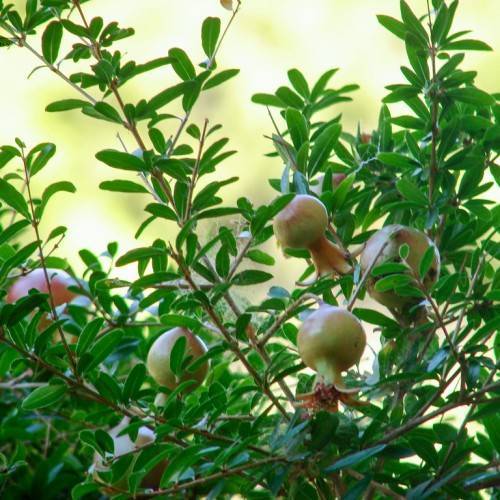
dwarf pomegranate
Punica granatum var. nana
Cycle:
Perennial
Watering:
Average
Hardiness Zone:
7 - 11
Flowers:
Flowers
Sun:
Full sun,part shade
Fruits:
Fruits Ready In
Edible:
Yes
Leaf:
Yes
Growth Rate:
Low
Maintenance:
Low
Salt Tolerant:
Yes
Thorny:
Yes
Care Level:
Medium
watering
Dwarf pomegranates should be watered deeply and thoroughly every 7-10 days, depending on the season. Be sure to water until the soil is moist throughout, and not just wet on the surface. Allow the soil to dry slightly between waterings. During hot weather, it may be necessary to water more frequently. Always check the moisture of the soil with your finger before watering.
sunlight
Dwarf pomegranate plants thrive in full sun with 8-10 hours of direct sunlight per day. When grown indoors, they should be placed in a sunny spot with lots of sunlight, ideally near a south- or west-facing window. If the plants are outdoors, they should be placed in a sunny area that receives direct sunlight in the morning hours. Dwarf pomegranate plants are sensitive to heat and should not be left in direct sunlight for too long, particularly in the summer. During the hottest part of the day, the plants should be shaded or moved away from the sun to prevent scorching of the leaves.
pruning
Dwarf pomegranate plants benefit from pruning in order to maintain a desirable shape and promote a healthy, vigorous growth. Pruning should take place in late winter or early spring before new growth emerges. Start by removing any dead, diseased, or damaged branches. After that, selectively prune the remaining branches to maintain the desired shape and encourage new growth. Aim to reduce the overall size and keep the canopy open to allow good air circulation. When pruning, cut branches to just above leaf buds or outward-facing branches to encourage outward growth. Generally, no more than ¼ of the branches should be removed in any pruning session.
